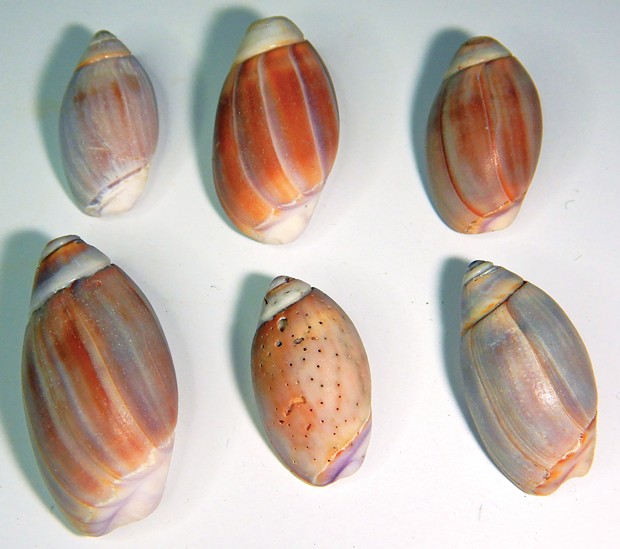[
{
"name": "Top Stories Video Pair",
"insertPoint": "7",
"component": "17087298",
"parentWrapperClass": "fdn-ads-inline-content-block",
"requiredCountToDisplay": "1"
}
]
I was bitten by a radioactive rat, which gave me the superpower of transforming myself from a 225-pound man into 225 1-pound rats.
I'm not interested in fighting evil or rescuing people from danger. I'm just interested in beachcombing. And it occurred to me that 225 rats could comb a lot more beach than one man.
I figured rats might be good at finding shells of the purple olive snail (Olivella biplicata). I've found olive snails plowing through the sand in low-tide channels at Mad River Beach. But I can't recall finding any of their empty shells washed up there.
There must be washed-up shells, and I thought a pack of rats could find them by looking under logs and into places I can't easily see as a large human. Plus, the shell is the shape of an olive pit and typically less than an inch long, so they could easily be transported by rats.
The pretty shell is popular in local jewelry making. Its colors usually contain some mix of tan, gray, reddish brown, blueish or greenish with purple highlights. And the olive snail frequently covers itself with its fleshy mantle, which produces a fine polish on the shell's surface. But the empty shells become duller as they roll around in the surf.
To find living olive snails, look for their trails in sand pools during super low tides. You'll often find a bump at the end where there's a live snail buried. You may also notice their siphon sticking out as they plow along. This little tube is used to "sniff" the water so the snail can find food and mates.
Typically, species of snails with siphons are predators and/or scavengers. And that is true for the olive snail, which is a scavenger of almost any meaty object it finds. And it is a predator of small clams, mussels and worms. Plus, it eats algae and detritus, so it's a true omnivore.
In turn, olive snails are fed upon by birds, crabs, moon snails and sea stars. In fact, when certain sea stars touch an olive snail, the snail will flip and can even swim away by flapping its mantle.
Olive snails have no eyes, so the male finds a female using chemical cues along her trail. During mating, the male temporarily cements his shell to the female and they "do it" for up to three days. There is no particular mating season, so it takes place year-round. Egg cases of about a half millimeter wide are usually laid on various empty mollusk shells or stones, and each egg case is shaped like a tiny dome topped wide-brimmed hat.
Olive snails may live for 15 years. But they are often parasitized by the larvae of a certain trematode worm that sterilizes the snail. So, the snail may continue to mate but won't produce any offspring the whole rest of its long life.
Anyway, I transformed into 225 rats and we scurried over the beach to hunt olive shells. Unfortunately, every local hawk, fox, bobcat, terrier and kid with a BB gun was also at the beach. Because we lacked even basic rat survival skills, it was a bloodbath and I was the only one to make it back to the car alive.
However, there was only enough rat mass remaining to retransform me into a tiny one-pound man. Now I can't drive and I have to wear doll clothes. And you can imagine the difficulty I have satisfying my woman.
But every can of beer becomes a whole keg to me. Now that's a superpower.
Biologist Mike Kelly (he/him) is also the author of the book Tigerfish: Traditional and Sport Fishing on the Niger River, Mali, West Africa. It's available at Amazon or everywhere e-books are sold.
more from the author
-
Washed Up Love
- Jul 18, 2024
-
The Parchment Worm Turns
- May 30, 2024
-
Hot Tomcod Action
- Apr 18, 2024
- More »
































